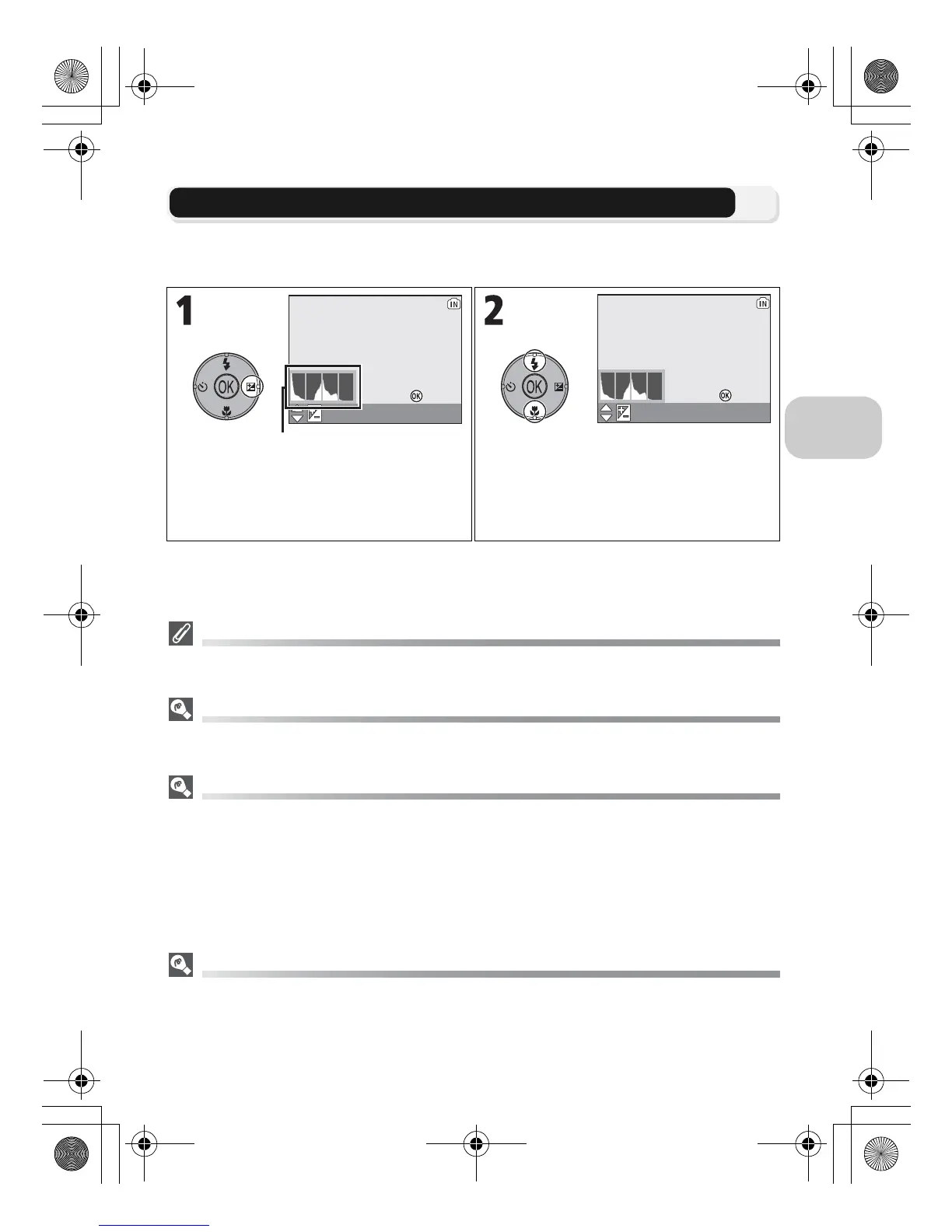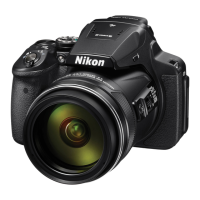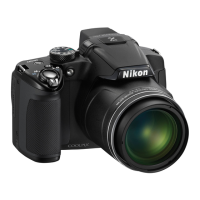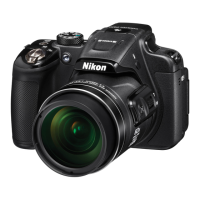33
More on Photography
I
Controlling Exposure: Exposure Compensation
Exposure compensation is used to alter the exposure from the value suggested by
the camera. Exposure compensation can be set to values between –2.0 EV (un-
derexposure) and +2.0 EV (overexposure) in increments of 1/3 EV.
Exposure Compensation
Exposure compensation is not available when K FIREWORKS SHOW (c39) is selected in
the Scene mode.
Exposure Compensation in P and A Modes
In addition to exposure compensation, exposure can be set with flexible program in P (Pro-
grammed auto) mode and aperture in A (Aperture-priority auto) mode.
Choosing a Value for Exposure Compensation
As a rule of thumb, select positive values when large areas of the frame are very brightly lit (for
example, when photographing an expanse of sunlit water, sand, or snow) or when the back-
ground is much brighter than the main subject. Choose negative values when large areas of
the frame are very dark (for example, when photographing a forest of dark green leaves) or
when the background is much darker than the main subject. This is because the camera, in or-
der to avoid extreme under- or over-exposure, tends to lower exposure when the frame is very
bright and raise exposure when the frame is very dark. This can make naturally bright subjects
look darker and naturally dark subjects appear over-bright, or “washed out.”
Histogram
A histogram shows distribution of tones in image; horizontal axis corresponds to pixel bright-
ness, with dark tones to left and bright tones to right, while vertical axis shows number of
pixels of each brightness in the image.
The scale of an axis is determined by the maximum number of pixels of a picture.
Display value for exposure compensation
(exposure compensation setting screen)
and histogram (distribution of tones).
Highlight desired value.
• You can frame your subject, focus, and
shoot.
• Press d to exit.

